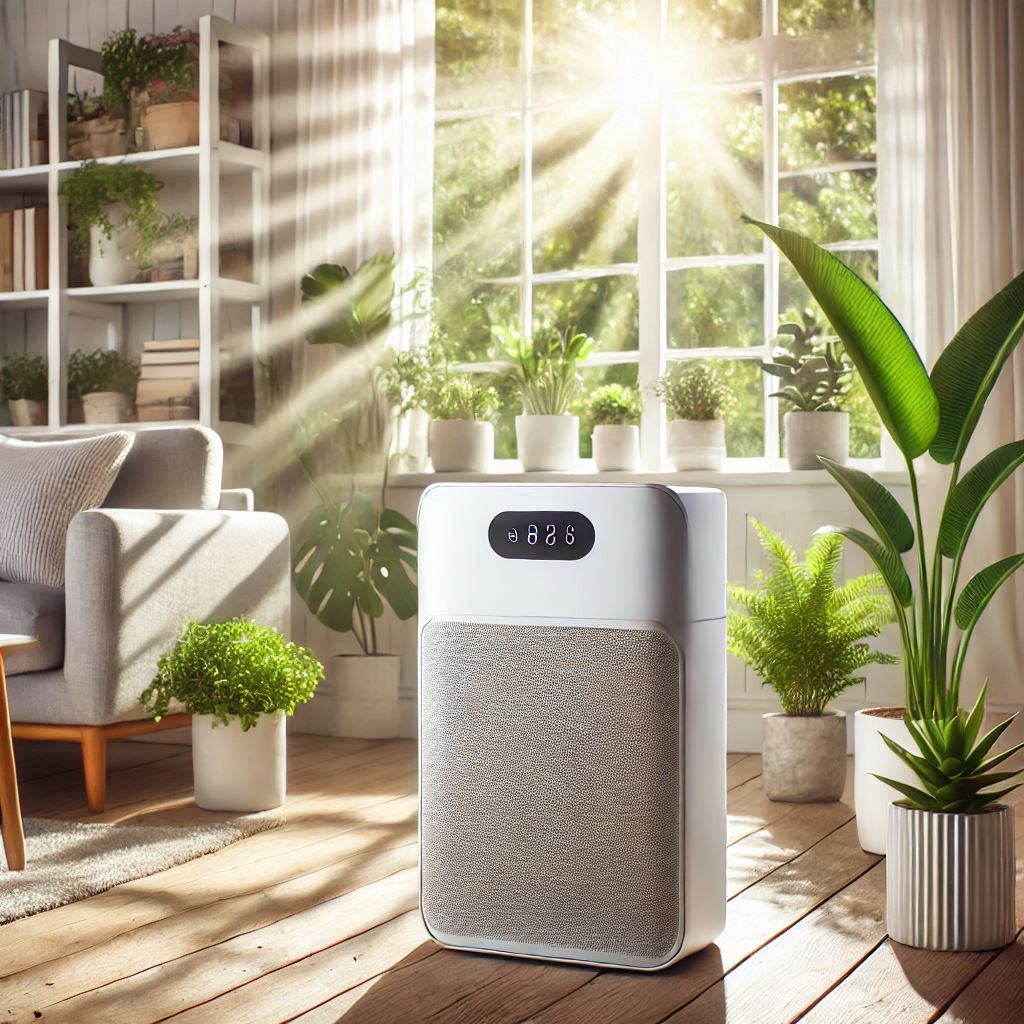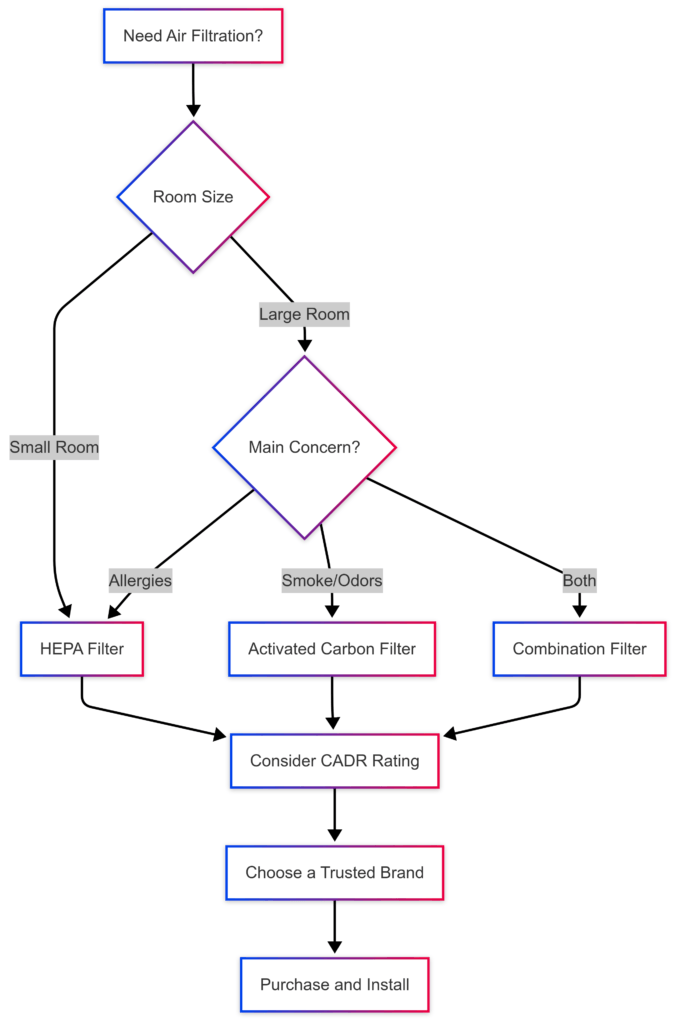
Debunk common myths about air purifiers and discover the truth about their effectiveness and functionality. Learn how to make informed decisions for cleaner, healthier indoor air.
Air purifiers have become a common household device, especially in urban areas where maintaining clean air can be a challenge. Yet, despite their presence, a lot of half-truths and myths swirl around their effectiveness and functionality. These myths can mislead potential buyers and even lead to using these devices ineffectively.
First off, let’s address the allure of air purifiers. The idea of purifying your air effortlessly is appealing, but without understanding what these devices can realistically achieve, users might find themselves disappointed. It’s crucial to separate fact from fiction to make informed decisions about air purification in your home or office.
Consider your air purifier not just as a purchase but as an investment in your health and well-being. Unfortunately, many users might assume these devices are magic boxes that zap away all harmful particles, without considering factors like maintenance, placement, or filter types, which are vital for optimal performance.
The next sections will take a closer look at some of the most common myths about air purifiers. By understanding the truth behind these myths, you can make smarter choices about enhancing your indoor air quality.
Myth #1: Air Purifiers Remove All Airborne Pathogens
Many people believe air purifiers are a catch-all solution for airborne pathogens, assuming that viruses, bacteria, and other microscopic nasties get entirely wiped out. This misconception often comes from confusing marketing and a lack of clear information.
In reality, the effectiveness of an air purifier largely depends on its type and the technology it uses. HEPA filters, for example, are excellent at trapping particles like dust and pollen, but they might not capture smaller viruses unless the air purifier also incorporates additional features like UV lights or ionizers.
Scientific studies back this up. While some air purifiers can significantly reduce particles and allergens, claiming absolute elimination of airborne pathogens might be overpromising. It’s essential to recognize that no single device can safeguard against all pollutants. Understanding these limits can help you choose additional measures to improve air quality, like proper ventilation or a combination of cleaning devices.
When dealing with allergens or pathogens, it might be beneficial to consult a health expert or allergist. Their insights could provide specific guidance tailored to your health needs, ensuring you’re using air purification methods most effectively and safely.
It’s not just about buying the most advanced unit but matching your choice to the specific issues in your space. Balancing expectations with what these purifiers can realistically achieve helps in managing air quality with foresight and precision.

Myth #2: Air Purifiers Are Completely Silent and Maintenance-Free
One common misunderstanding is that air purifiers work quietly in the background with little to no attention needed. This myth can lead to disappointment when users encounter hums and whirs or even performance issues over time.
Air purifiers vary in noise levels. While some models are designed to operate quietly, others might have noticeable sound levels, especially on higher settings. Noise levels can differ significantly depending on the model, so it’s a good idea to check user reviews or product specifications if you’re sensitive to noise.
Beyond that, air purifiers require regular maintenance to function properly, which is often overlooked. Filters need periodic replacement or cleaning—ignoring this can reduce the device’s efficiency or even damage it over time. This upkeep can vary by model, with some needing more frequent attention than others.
Taking care of your air purifier is similar to any other household appliance. Regular maintenance is crucial not just for longevity but for ensuring it continues to provide optimal air quality. Whether it’s cleaning or replacing filters, following the manufacturer’s guidelines can save you time and hassle in the long run.
When selecting an air purifier, research its maintenance requirements and noise levels. Understanding these factors ahead of time will help set realistic expectations and enhance your air purification experience.
Myth #3: Air Purifiers Can Cause Health Issues – The Dark Side Debunked
Concerns often arise about whether air purifiers might do more harm than good, especially considering some models emit ozone as a byproduct. It’s understandable why this can make folks apprehensive.
Fortunately, not all air purifiers emit ozone. Many modern devices are designed specifically to address these concerns. For instance, HEPA filters don’t produce ozone and are quite effective at capturing common allergens. If avoiding ozone is a priority, choosing the right type of purifier is key.
Moreover, while some studies suggest potential risks related to ionizers and ozone-emitting models, recognized health authorities maintain that these risks are typically negligible when the devices are used correctly within the manufacturer’s guidelines. It’s all about knowing how to use the devices wisely and within safe limits.
Doctors and health experts generally agree that, in many cases, the benefits of reducing allergens and improving air quality outweigh the minimal downsides of using an air purifier. Still, it’s crucial to be informed about the type of air purifier you’re using and any specific sensitivities you or your family may have.
For people with respiratory conditions, some sensitivity to air changes or the technologies used in purification systems might occur. Consulting with a healthcare provider can clarify any concerns and provide personalized advice, ensuring you’re enhancing your air quality safely and effectively.
Myth #4: Scientific Backing Is Lacking for Air Purifier Claims
Some might say that air purifiers are all hype with little scientific validation behind their claims. This myth can leave potential users skeptical, especially when considering an often costly investment. Yet, a number of studies support the efficacy of air purifiers under the right conditions.
Research demonstrates that while individual results may vary, air purifiers can significantly reduce indoor particle levels, benefiting allergy sufferers and those with respiratory issues. However, the key is to ensure you’re purchasing a certified model from reputable brands that comply with recognized standards like HEPA or CADR ratings.
Doctors often voice support for air purifiers as part of a comprehensive approach to improving indoor air quality. While not a singular solution, they complement practices like maintaining adequate ventilation and reducing indoor pollutants at the source.
Having a look at independent reviews and scientific studies can provide further insight into a device’s effectiveness. Verified results from legitimate testing agencies offer important reassurance, confirming that a product delivers what it promises.
Considering the available evidence, air purifiers can be a valuable tool in the quest for cleaner indoor environments. Selecting models supported by scientific verification and expert recommendations ensures you’re making informed decisions.


I’ve often wondered about the actual effectiveness of air purifiers, especially when it comes to claims like removing airborne pathogens entirely. Your explanation about the limits of HEPA filters and the need for additional features like UV lights or ionizers was eye-opening.
I also appreciated the discussion on maintenance, as I’ve neglected filter replacements in the past, which probably affected performance. Have you come across any studies or recommendations for specific air purifier brands that are particularly effective for reducing allergens while being low-maintenance?
Thanks for breaking down these myths—I feel much better informed about what to look for when purchasing or using an air purifier!”
Hi Roopesh, Thank you so much for your thoughtful comment! I’m glad the article helped shed some light on the effectiveness of air purifiers and the importance of regular maintenance. It’s true—neglecting filter replacements can significantly impact performance, so staying on top of that is key.
Regarding your question, there are indeed some air purifiers that stand out for reducing allergens while being relatively low-maintenance. Brands like Blueair, Coway, and Levoit are often praised for their efficiency in trapping allergens and their user-friendly features, like filter replacement indicators and quiet operation. Some models even combine HEPA filtration with UV-C lights or ionizers for enhanced pathogen removal.
If you need specific recommendations based on your space size, budget, or other needs, I’d be happy to help you narrow them down. Thanks again for engaging with the post—it’s always great to hear when readers find value in the content. Feel free to share any other questions or insights!